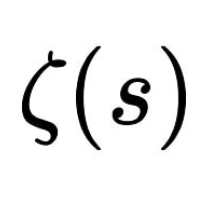Énoncé de l’exercice n°1 :
On munit $\mathbb{R}^n$ de sa structure euclidienne standard.
Soient $a$ et $b$ deux points distincts dans $\mathbb{R}^n$, $c = \frac{1}{2}(a + b)$.
Supposons que $d(x, a) = d(x, b)$.
Démontrer que $d(x, c) < d(x, a)$.
Indication :
Utiliser des distances au carré, les développer.
Corrigé de l’exercice :
Posons $\delta = \|x – a\| = \|x – b\|$.
On a :
$$
\|x – c\|^2 = \left\| \frac{1}{2}(x – a) + \frac{1}{2}(x – b) \right\|^2
$$
$$
= \frac{\delta^2}{4} + \frac{\delta^2}{4} + \frac{1}{2} (x – a \mid x – b)
$$
$$
= \frac{\delta^2}{2} + \frac{1}{2} (x – a \mid x – b)
$$
Par l’inégalité de Cauchy-Schwarz, nous savons que $(x – a \mid x – b) \leq \|x – a\| \|x – b\| = \leq \delta^2$.
Donc $\|x – c\|^2 \leq \delta^2$, donc $\|x – c\| \leq \delta$, donc $d(x, c) < d(x, a)$.
Énoncé de l’exercice n°2 :
Soit $\lambda \in \mathbb{R}$. Pour $n \in \mathbb{N}$, définissons $A_n = \begin{pmatrix} 1 & -\frac{\lambda}{n} \\ \frac{\lambda}{n} & 1 \end{pmatrix}$. Calculons $\lim_{n \to +\infty} A_n^n$.
Indication :
Se ramener à une matrice de rotation. En effet, la puissance n-ième d’une matrice de rotation est facile à calculer.
Corrigé de l’exercice :
On pose $1 + \frac{\lambda}{n} i = \rho_n e^{i \theta_n}$, avec $\rho_n = \left(1 + \frac{\lambda^2}{n^2}\right)^{1/2}$ et $\theta_n = \arctan \left(\frac{\lambda}{n}\right)$.
Donc, $A_n = \rho_n \begin{pmatrix} \cos(\theta_n) & -\sin(\theta_n) \\ \sin(\theta_n) & \cos(\theta_n) \end{pmatrix}$.
Il en résulte que
$$
A_n^n = \rho_n^n \begin{pmatrix} \cos(n \theta_n) & -\sin(n \theta_n) \\ \sin(n \theta_n) & \cos(n \theta_n) \end{pmatrix}.
$$
En passant à la limite, on obtient
$$
\lim_{n \to +\infty} n \theta_n = \lambda \quad \text{et} \quad \ln(\rho_n^n) = \frac{n}{2} \ln \left(1 + \frac{\lambda^2}{n^2}\right) \to 0.
$$
Par conséquent, $\lim_{n \to +\infty} \rho_n^n = 1$.
Enfin,
$$
\lim_{n \to +\infty} A_n^n = \begin{pmatrix} \cos(\lambda) & -\sin(\lambda) \\ \sin(\lambda) & \cos(\lambda) \end{pmatrix}.
$$
Énoncé de l’exercice n°3 :
Pour quels $A \in \mathcal{M}_n(\mathbb{R})$ existe-t-il $M \in \mathcal{M}_n(\mathbb{R})$ tel que $\lim_{n \to +\infty} M^n = A$ ?
Indication :
Utiliser la suite extraite $(M^{2n})$ .
Corrigé de l’exercice :
Supposons qu’il existe une matrice $M \in \mathcal{M}_n(\mathbb{R})$ telle que $\lim_{n \to +\infty} M^n = A$.
Alors, par continuité de l’application qui à une matrice associe son carré, et par théorème sur la limite d’une suite extraite d’une suite convergente :
$$
A^2 = (\lim_{n \to +\infty} (M^n))^2 = \lim_{n \to +\infty} (M^n)^2 = \lim_{n \to +\infty} M^{2n} = A,
$$
ce qui implique $A^2 = A$.
Réciproquement, si $A^2 = A$, alors $A^n = A$ pour tout $n \geq 1$, ce qui donne $\lim_{n \to +\infty} A^n = A$.
Une condition nécessaire et suffisante est : $A$ est une matrice de projecteur.
Énoncé de l’exercice n°4 :
On munit l’espace $\mathcal{M}_n(\mathbb{R})$ de la norme $\|A\|_f = \left( \operatorname{tr}(A^T A) \right)^{1/2}$.
Démontrer que pour toutes matrices $A, B \in \mathcal{M}_n(\mathbb{R})$, on a : $\|AB\|_f \leq \|A\|_f \|B\|_f$.
Démontrer que cette inégalité admet un cas d’égalité.
Indication :
Utiliser la formule du produit matriciel faisant intervenir les éléments de la matrice.
Corrigé de l’exercice :
Cette norme est associée au produit scalaire canonique : $(A | B) = \operatorname{tr}(A^T B)$.
Pour toute matrice $A = (a_{i,j}) \in \mathcal{M}_n(\mathbb{R})$, on a :
$$
\operatorname{tr}(A^T A) = \sum_{j=1}^n \sum_{i=1}^n [A^T]_{j,i} [A]_{i,j} = \sum_{i=1}^n \sum_{j=1}^n a_{i,j}^2,
$$
Soient $A = (a_{i,j})$ et $B = (b_{j,k})$ dans $\mathcal{M}_n(\mathbb{R})$, et posons $C = AB = (c_{i,k})$.
Pour tous $i$ et $k$, on a : $c_{i,k} = \sum_{j=1}^n a_{i,j} b_{j,k}$.
Par l’inégalité de Cauchy-Schwarz, on obtient : $c_{i,k}^2 \leq \left( \sum_{j=1}^n a_{i,j}^2 \right) \left( \sum_{j=1}^n b_{j,k}^2 \right)$.
En séparant la somme double, on obtient :
$$
\|C\|_f^2 = \sum_{i,k=1}^n c_{i,k}^2 \leq \sum_{i,k=1}^n \left( \sum_{j=1}^n a_{i,j}^2 \sum_{j=1}^n b_{j,k}^2 \right) = \sum_{i,j=1}^n a_{i,j}^2 \sum_{j,k=1}^n b_{j,k}^2 = \|A\|_f^2 \|B\|_f^2
$$
Donc $\|C\|_f \leq \|A\|_f \|B\|_f$.
Prenons par exemple la matrice $J$ dont tous les éléments valent $1$.
Si $A = B = J$, alors $\|A\|_f = \|B\|_f = n$ et $AB = nJ$.
Donc, $\|AB\|_f = n^2 = \|A\|_f \|B\|_f$.
Énoncé de l’exercice n°5 :
On munit $\mathcal{M}_n(\mathbb{K})$ de la norme $\|A\|_\infty = \max_{i,j} |a_{i,j}|$.
Démontrer que, pour toutes matrices $A, B \in \mathcal{M}_n(\mathbb{K})$, on a $\|AB\|_\infty \leq n \|A\|_\infty \|B\|_\infty$.
Démontrer cette inégalité admet un cas d’égalité.
Indication :
Utiliser la formule du produit matriciel faisant intervenir les éléments de la matrice.
Corrigé de l’exercice :
Considérons les matrices $A = (a_{i,j})$ et $B = (b_{j,k})$ dans $\mathcal{M}_n(\mathbb{K})$, et posons $C = AB = (c_{i,k})$.
Pour tous indices $i$ et $k$, on a $c_{i,k} = \sum_{j=1}^n a_{i,j} b_{j,k}$.
Il en découle que
$$
|c_{i,k}| \leq \sum_{j=1}^n |a_{i,j}| |b_{j,k}| \leq \sum_{j=1}^n \|A\|_\infty \|B\|_\infty = n \|A\|_\infty \|B\|_\infty.
$$
On en déduit donc que $\|AB\|_\infty = \max_{i,k} |c_{i,k}| \leq n \|A\|_\infty \|B\|_\infty$.
Si l’on prend la matrice $J$ dont tous les éléments valent $1$.
Alors, si $A = B = J$, on a $\|A\|_\infty = \|B\|_\infty = 1$, de plus $AB = nA$ donc $\|AB\|_\infty = n = n\|A\|_\infty \|B\|_\infty$.
Énoncé de l’exercice n°6 :
